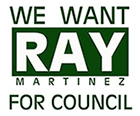Marijuana Legalization Brings More Drugs Than Money to Classrooms
 Soon voters in 14 states, including Arizona, California, Maine, and Nevada, will decide whether to follow Colorado and legalize marijuana. When Colorado faced the same vote, the most common argument from the pro-legalization side was that it would bring more tax revenue for education. As an educator, I was opposed to funding capital improvement for education projects with drug money, but was willing to listen to the debate for decriminalization of pot. As I predicted, there has been more negative effects in the classroom than money in the classroom.
Soon voters in 14 states, including Arizona, California, Maine, and Nevada, will decide whether to follow Colorado and legalize marijuana. When Colorado faced the same vote, the most common argument from the pro-legalization side was that it would bring more tax revenue for education. As an educator, I was opposed to funding capital improvement for education projects with drug money, but was willing to listen to the debate for decriminalization of pot. As I predicted, there has been more negative effects in the classroom than money in the classroom.
Marijuana marketing is everywhere. Kids see advertisements with everything from candy bars to lollipops to soda to brownies that are infused with THC, the psychoactive chemical found in marijuana. These advertisements often attempt to be humorous by spoofing products that are already familiar to children, such as “Pot” Tarts. According to BusinessWeek, “Edibles and other infused products—defined as anything other than the bud itself—make up at least half of the total, dispensary owners say.”
Colorado is now number one in marijuana use by 12- to 17-year-olds. The marijuana industry in Colorado is so normalized that kids don’t even understand the dangers. Parents also don’t understand how easy it is for these products to get into schools. A recent study by the Rocky Mountain High Intensity Drug Trafficking Area (RMHIDTA) found that of students who obtained marijuana, 45 percent of them obtained it legally from friends, 24 percent got it from the black market, 22 percent from their parents, six percent from medical marijuana dispensaries, two percent from retail marijuana stores and one percent from medical marijuana card holders.
Parents may think just because they don’t use or leave products around their house that their kids are safe. They may trust their own judgment, but do they trust their kids’ friends? How about their friends’ older siblings? Or the strangers who still sell on the black market?
In June 2016, over 100 School Resource Officers were surveyed by RMHIDTA on the impact of marijuana legalization. Eighty-two percent said there has been an increase in marijuana-related incidents since legalization. Among the most common violations by students, 45 percent had been under the influence of marijuana during school hours and 43 percent were in possession of marijuana.
Legalization of pot will not destroy the cartels or the illegal sales to our youth. It will only force them to shift to selling harder drugs as we have seen with the increased use of heroin and other narcotics. The industry itself has repeatedly shown its reluctance to provide the safe handling of the residuals from their grow operations as students have reported that they dumpster dive to get free pot. The so-called industry fought childproof packaging because of cost instead of protecting children.
This isn’t just about students breaking the law, but the effects the prevalence of marijuana is having on their education and future opportunities for success. Many students don’t understand the potency of marijuana-infused edibles. There have been several instances of students being unable to return to class or emergency services having to be called. Additionally, marijuana violations make up 58 percent of all drug-related expulsions and 78 percent of all referrals to law enforcement. These actions can put kids on a path from which they may never come back.
What good are promises of money for infrastructure once students are expelled or involved in the legal system?
It is crucial that students have an environment where they can learn and obtain the skills necessary to make a positive impact on society. The legalization of marijuana in Colorado puts students at a disadvantage compared to students in other states. Voters across the nation have the benefit of learning from our state’s mistakes and keep their kids safe and on a path to success. As always, adults are role models for children. Getting high is not a model of responsibility we should portray to the impressionable and developing brains of our young people.
Published in Law

Leave A Comment
You must be logged in to post a comment.